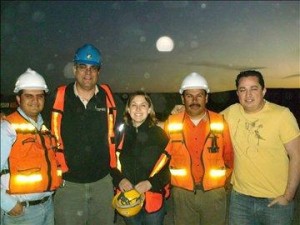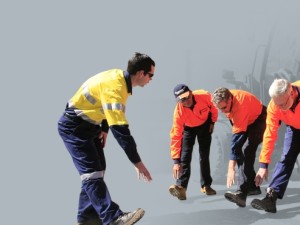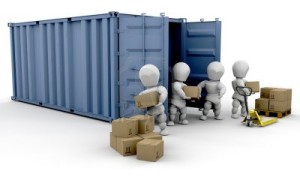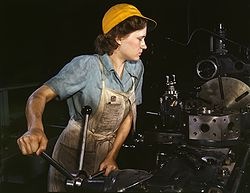I’ve said it before: the immigration department is doing fantastic work protecting Australian jobs. As with any country, one faction of news media and “whinging” public complain about immigrants ruining everything and taking jobs. But as an pseudo-immigrant I can confirm anecdotally that jobs — at least the desirable ones – are well protected.

I’m chilling out in that green state on the left (west). I should also mention that they reckon that over 1,500 people per week (both Australians and international folk) arrive looking for work connected to the (supposedly fading) mining boom.
Because my visa stipulates I can only work six months for one employer, and because hiring an employee for only six months is inefficient for most businesses, I eventually gave up looking for work that would activate more than two of my brain cells. I switched my focus to purely temp work, but a majority of jobs classed as such are actually “temp to perm” jobs in disguise. As in, “We want an employee we don’t have to commit to until we’ve gotten a chance to vet them, but we’re hoping down the line we like them and can keep them around for the long term.”
I know from experience working short, gap-filling, passing-through stints for temp agencies in Wyoming that a majority of short-term, genuinely temp jobs are of the heavy-lifting variety. Enter Australian cultural challenge #71 — archaic gender profiling. It’s not as bad as New Zealand. However, the first question the agencies had for me upon inquiring about labor/equipment operating positions was all-too often, “Oh. Um, is it for yourself?”
Each time I had to assure the job-middle-man (woman, usually) that I have matching experience and appropriate fitness. None of the calls left me feeling hopeful (and this guy can attest that I’m not the only one), so imagine my surprise when one of dozens of agencies finally brought me in to do paperwork! Yay!
At the end of the interview I enquired about the process and when I could expect to get a call for the frieght-handling positions they were looking to fill. Now that I had been vetted, she said, I would be submitted to the client with other candidates and they would choose. I’m sure my face fell. Foiled again! I had resisted the urge to tick the “Mr.” box on my application and change my first name to my first initials. Should have fibbed. I was the only woman in the roomful of candidates.
I kissed another opportunity goodbye and turned my focus to enjoying the many facets of my current house sitting existence. A phone call ten days later asking me to attend my first freight handling shift left me shocked but pleased. In particular, I was excited to see if Australian safety theory had anything to do with reality.

Delivering the mail safely since… well, I can’t be bothered to look up when the Australia Post history.
Tangent: it’s stunning: school crossing guards and mail delivery people wear full-body, hi-visibility clothing. Basically space-suits of neon yellow. Landscapers, construction workers, delivery drivers… the amount of distracting, ultra-bright clothing I encounter daily blows my mind. But does this in-your-face visual actually add up to a safer world? I know anecdotally many of the official and safe things we taught new equipment operators in training at my former mine site often had little to do with the way things really worked. So what are the chances that Australia’s rah-rah-rah, safety-safety-safety stuff has an impact in real life?
End tangent.
Freight-handling shifts start in the wee hours of the morning. The company brings in staff at an-ever changing hour (based on the volume of packages) to ensure that the delivery trucks can be knocking on doors at the start of the business day. My first shift started at 3 a.m. with a 30 minute commute at the front end.
I rocked up to the security office in the dark, wearing a hi-vis vest. My co-workers had high-vis layers — jackets upon vests upon shirts — wow. I signed in, filled out paperwork, got my armband, and was led across a vast warehouse shed following the yellow diagonal lines marking the pedestrian path. A man with a pleasant disposition, shaped like a raindrop and sporting a mustache, scratched my name off his clipboard and told me to have a seat with everyone else on the metal barricading. Shift start rolled around, and a seemingly invisible force caused most of my cohorts to rise.
Behind us was a supervisor with shoulder length red curls who looked like he spent lots of time strumming an electric guitar. He led a rather lackadaisical stretching session after which, raindrop supervisor gave a safety lecture that included informing everyone that safety equals money and that’s why the company is pushing it so hard. Then he told everyone to “fuck the freight” if it came down to their safety. Next I was called over to a collection of newbies. There, raindrop supervisor informed us he was about to “blow our tits off, s’cuse me ladies”. By the end of the debrief, I understood I was to go unload a truck/shipping container.
Apparently, the fact that it was a “country trailer” – i.e. containted packages destined for locales beyond the Perth-metropolitan area — was undesirable. I worked with a Sudanese refugee and a medical research scientist going back to school for his engineering degree. We removed the poles securing the plywood sheets that held all the boxes in place. We fired up the conveyor belt and started tossing packages, making sure the label that mattered landed facing up.
Each time we broke through a new layer, we inched the conveyor belt deeper into the truck. Creeping farther from the warehouse lights felt a bit like archaic underground mining — our environment suddenly lit only by the half-hearted bulbs at the front of the thrumming belt. The sound waves quickly ran out of travel space, and the loud smack and crash of falling and thrown boxes became an omni-present, thundering echo.
The violence with which we handled packages was stunning. Forty percet of the stack to be moved soared to the ceiling of the container. How to get it down and onto the belt? A complicated move that takes some experience to finess. Essentially the stack is destabilized at waist level by starting to remove a box, leaving a teetering (massively unsafe!) tower. Ideally, this tower (of laptops, printers, dozens of boxes labelled “fragile”, etc.) is angled such that it comes crashing down on the conveyor belt. A few casualties crash all the way to the floor. Of course, this is all happening at warp speed — everything moving as quickly as possible — which means boxes and bodies often collide. As the university student put it, “It’s not a day of work if you don’t cop a box in the head.” Indeed.

I now understand how this could easily happen to a package. In fact, I’m shocked it doesn’t happen to all of them!
The frenzy is incredible. Once a team of three hits a rhythm, two people — one on either side of the conveyor belt — lug and toss boxes fast and furious. Meanwhile person #3 attacks the mind-numbing and physically demanding job of quickly locating the significant label (and ignoring all the insignificant ones), often rotating heavy boxes until a BINGO is made and facing skyward.
Where the conveyor belt gains in elevation, sometimes box jams occur. The frentic pace demands that, rather than sort out the issue, the offending boxes are quickly shoved off the belt — crashing to the floor to be dealt with once they whole trailer is unloaded.
Having been tasked with both jobs I’ve described, I can now fully understand how insignificant a little “Fragile” sticker or scribble is to a package handler. My job was to get boxes onto the belt as fast as humanly possible. In the milliseconds between grabbing a package and heaving it onto the conveyor belt, my eyes barely had time to search for the label that will ensure your package doesn’t get lost. The only “Fragile” label that managed to deliver its message in time had huge letters — four inches tall — and covered the entire side of the box.
The conveyor belt is like a giant tongue lapping packages up out of the container. As the boxes move toward the center of the facility, scanners at every junction beep and hum providing that up-to-the-second online-package tracking that’s so delightful when one is anticipating something special. I know from my second and third/last freight shifts that the goods then travel to a belt surrounded by workers looking for a specific set of zip codes. This part of the process requires reading labels as packages skim by, lugging the appropriate boxes off the main belt onto rollers and through a scanner, then playing a giant game of Tetris — building six or seven foot solid pallets from the multitude of shapes.
I preferred the additional brain engagement of the latter to mindlessly hucking packages onto the conveyor belt. I still had time to admire the moving constellations of plane lights outside the warehouse bays (most freight companies have shipping facilities right by the airport) and time to analyze and understand why shipping is so expensive in OZ and New Zealand. All my co-workers were making a minimum of $20 an hour, and most closer to $30. Some even $40.
It’s strange to be in a country where so many more people have access to a living wage. I haven’t been here long enough or asked enough personal questions to suss out how much better or happier this system might be than America’s. My premature conclusion is that quality of life shouldn’t be dictated by brain power. I know several manual laborers with fantastic work ethics who simply would not have the mental capacity to be managers, doctors, or lawyers no matter how hard they worked. But if they put in a solid day’s work doing heavy lifting or pouring beers for the latter folk, why don’t they deserve not to have to choose between feeding their families and keeping the lights on?
Amiright?!♣
Next up: post-freight-handling-post-house-sitting camping trip!!!









1 ping